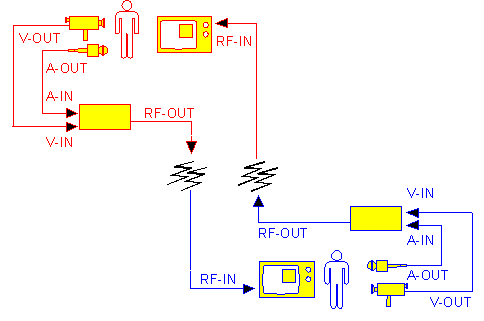 |
|||||||||
|
|
|||||||||
ASSUMPTIONS
SYSTEM TOUR Let's begin the tour starting at the site in the upper left hand corner of the diagram. As the user has a conversation with a user at the other end, the camera creates a video signal while the microphone creates an audio signal. These signals are combined and converted into an acceptable transmission signal at the modulator. The outgoing signal travels through cable and eventually reaches the other site. This incoming signal is routed to a television. The user can also display the video signal that they are broadcasting by using Picture-in-Picture. COMPONENT DETAILS Microphone A microphone is a hardware device that converts analog sound waves into an electrical signal that can be used by other hardware devices. Note that there are microphones specifically designed for speech recognition. These sensitive microphones are developed to minimize distortion, eliminate background sounds and cancel distant noise. One such product is Parrot. Camera A camera is a hardware device that converts visible light into an electrical signal. Typically this signal is recorded on a tape or viewed on a television screen. Note that there are cameras designed for communication. One such example is the Canon VC-C1. Modulator & RF Channel The modulator depicted above takes analog video and analog audio and combine these signals into a standard analog audio/video signal modulated at the appropriate frequency for transmission via RF cable. This RF signal is sent across a cable via this closed circuit system. This is one of several systems that exist today. Variations are systems based on ISDN line-modems or T1 line-CODECs. Television The majority of televisions in homes today and all televisions in the future will include caption decoder technology. Most new televisions also have a Picture-in-Picture feature that can be useful for videoconferencing.
© K. Acker, T. Lytle, J. Porvin (1998) Back to VisCom 98 Projects Homepage |

